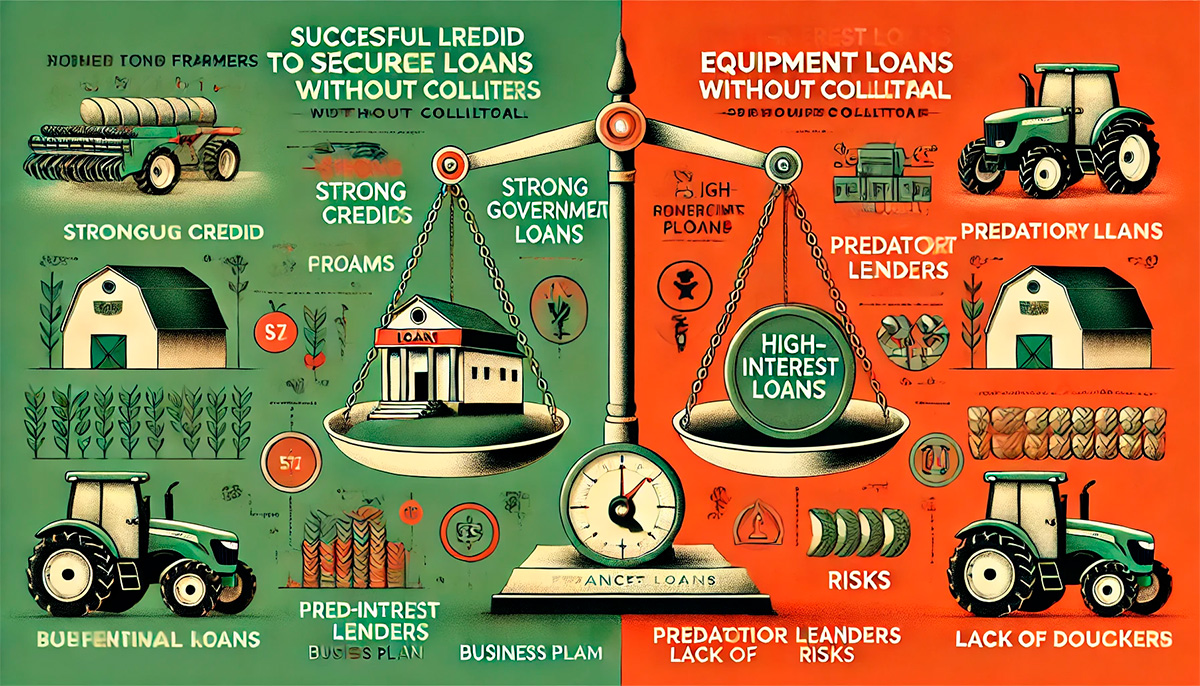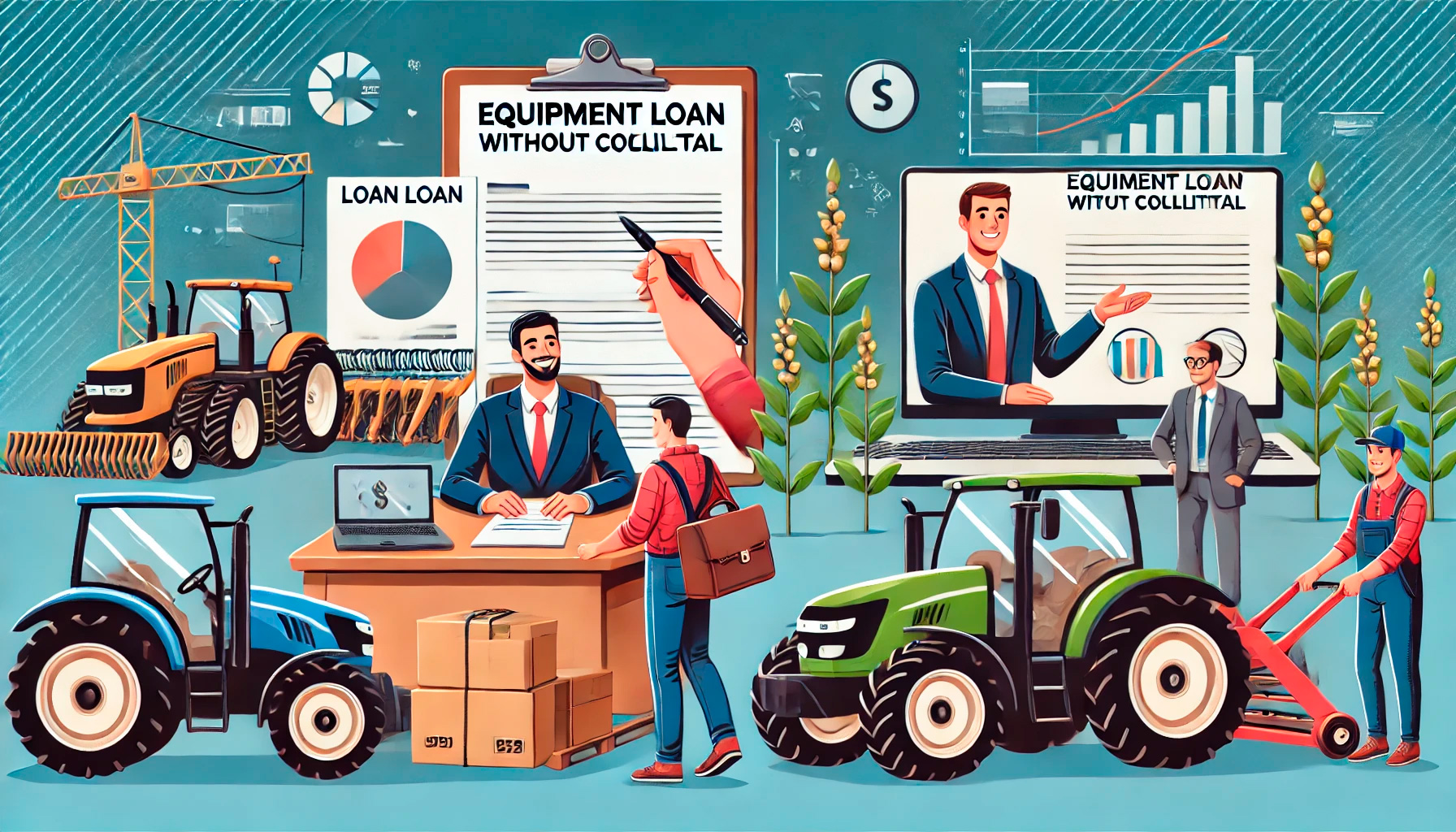Farming is more than just a profession; it’s a way of life. From dawn till dusk, farmers toil under the sun, nurturing crops and tending to livestock. Yet, despite their hard work, many farmers face a significant hurdle: accessing the equipment they need to thrive. Modern farming requires advanced machinery—tractors, harvesters, irrigation systems—but these tools often come with hefty price tags. For farmers without collateral, securing a loan to purchase such equipment can feel like an insurmountable challenge. However, with the right knowledge and approach, it’s possible to navigate this financial landscape and obtain the necessary funding. Let’s explore how farmers can get equipment loans without collateral.
Understanding Collateral-Free Loans
Traditionally, loans are secured by collateral—assets like land, property, or equipment that a borrower pledges to the lender as a guarantee. If the borrower defaults, the lender can seize the collateral to recover their losses. However, not all farmers have assets to offer, especially those who are just starting or operate on a smaller scale. This is where collateral-free loans come into play. These loans are designed to provide financial support without requiring borrowers to put up assets as security. Instead, lenders assess the borrower’s creditworthiness, business plan, and repayment capacity.
For farmers, collateral-free loans can be a lifeline, enabling them to invest in essential equipment that boosts productivity and efficiency. But how does one qualify for such loans? The answer lies in preparation, research, and building trust with lenders.
Building a Strong Credit Profile
One of the most critical factors in securing a collateral-free loan is having a strong credit profile. Lenders rely on credit scores to gauge a borrower’s reliability and ability to repay the loan. For farmers, this means maintaining a clean credit history, paying bills on time, and avoiding excessive debt. If your credit score is less than stellar, take steps to improve it before applying for a loan. This might include paying off outstanding debts, correcting errors on your credit report, or using a secured credit card to build positive credit history.
Additionally, lenders may consider your farming experience and track record. Demonstrating a history of successful harvests, efficient operations, and steady income can bolster your credibility. If you’re a new farmer, consider partnering with a more experienced mentor or presenting a detailed business plan to showcase your potential.
Exploring Government Programs and Subsidies
Governments around the world recognize the importance of agriculture and often provide financial support to farmers. Many countries offer loan programs specifically designed for farmers, including those without collateral. These programs may come with lower interest rates, flexible repayment terms, or even subsidies to reduce the financial burden.
For instance, in the United States, the Farm Service Agency (FSA) offers direct and guaranteed loans to farmers who cannot secure financing from traditional lenders. Similarly, in India, the Kisan Credit Card scheme provides farmers with access to affordable credit for purchasing equipment and other agricultural needs. Research the programs available in your region and determine your eligibility. Applying for government-backed loans can significantly increase your chances of approval.

Leveraging Alternative Lenders
Traditional banks are not the only source of funding. In recent years, alternative lenders have emerged as a viable option for farmers seeking collateral-free loans. These lenders, which include online platforms, microfinance institutions, and agricultural cooperatives, often have more flexible eligibility criteria and faster approval processes.
When exploring alternative lenders, it’s essential to conduct thorough research. Look for reputable institutions with positive reviews and transparent terms. Be cautious of predatory lenders who may impose exorbitant interest rates or hidden fees. Reading the fine print and asking questions can help you avoid unfavorable deals.
Presenting a Solid Business Plan
For lenders, the key concern is whether you can repay the loan. A well-crafted business plan can address this concern by demonstrating your farming operation’s viability and profitability. Your plan should include details such as your crop selection, market analysis, projected income, and expense breakdown. Highlight how the equipment you intend to purchase will enhance productivity and contribute to your farm’s growth.
Including a repayment strategy is equally important. Outline how you plan to generate revenue and allocate funds toward loan payments. Providing realistic projections and a clear roadmap can instill confidence in lenders and increase your chances of approval.
Seeking Support from Agricultural Organizations
Agricultural organizations and cooperatives often have resources to support farmers in securing loans. These organizations may offer financial literacy training, loan application assistance, or even partnerships with lenders. Joining such groups can provide valuable networking opportunities and access to exclusive funding options.
Additionally, some organizations offer grants or low-interest loans to farmers who demonstrate innovation or sustainability in their practices. If your farming methods align with these values, consider applying for such programs. Not only can they provide financial support, but they can also enhance your farm’s reputation and marketability.
Considering Equipment Leasing
If obtaining a loan proves challenging, equipment leasing is another option worth exploring. Leasing allows farmers to use equipment for a specified period in exchange for regular payments. While leasing doesn’t result in ownership, it can provide access to modern machinery without the need for a large upfront investment or collateral.
Leasing also offers flexibility, as you can upgrade to newer equipment at the end of the lease term. This can be particularly beneficial in an industry where technology evolves rapidly. Evaluate the costs and benefits of leasing versus buying to determine which option aligns with your financial goals.
Conclusion: Empowering Farmers Through Financial Access
Access to modern equipment is essential for farmers to remain competitive and sustainable in today’s agricultural landscape. While the lack of collateral can pose a challenge, it’s not an insurmountable barrier. By building a strong credit profile, exploring government programs, leveraging alternative lenders, and presenting a solid business plan, farmers can secure the funding they need.
Remember, the journey to obtaining a collateral-free loan requires patience, persistence, and preparation. With the right approach, farmers can unlock new opportunities, enhance their operations, and continue feeding the world. After all, the seeds of success are often sown with a little help and a lot of determination.



